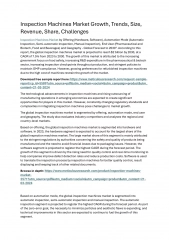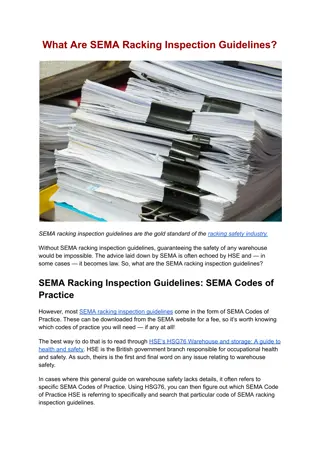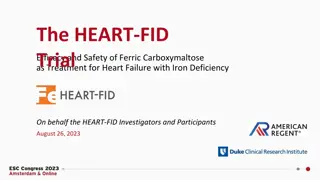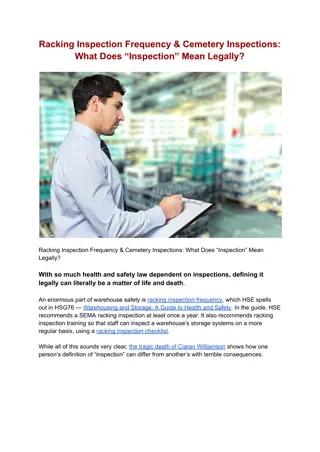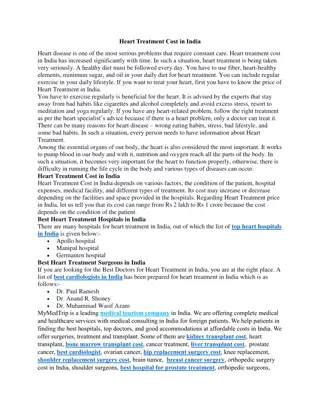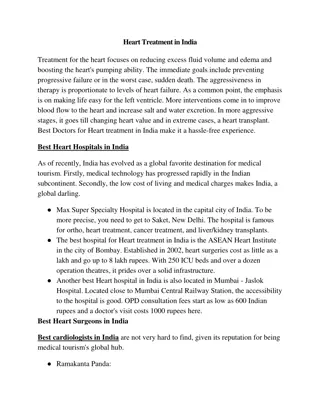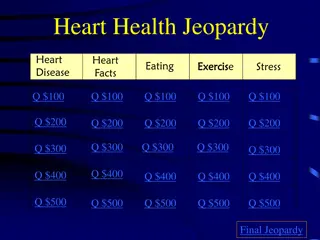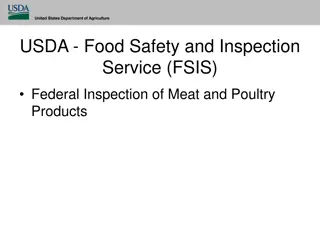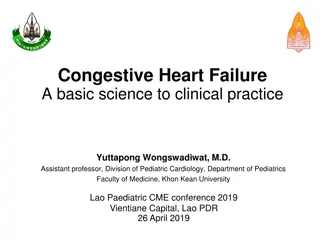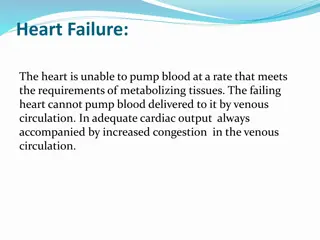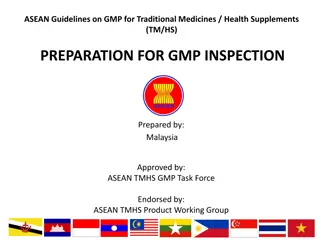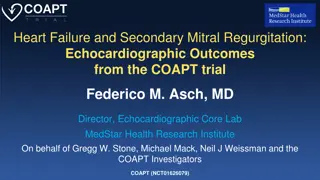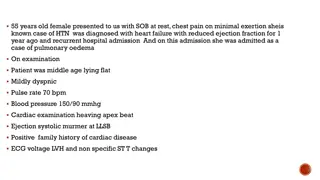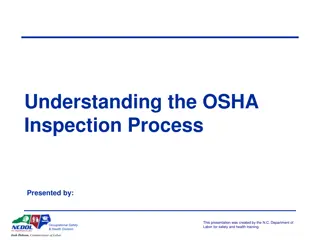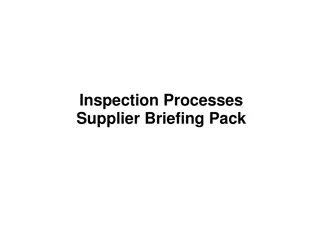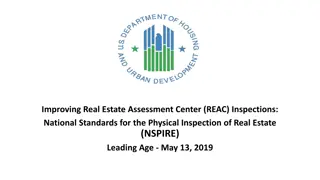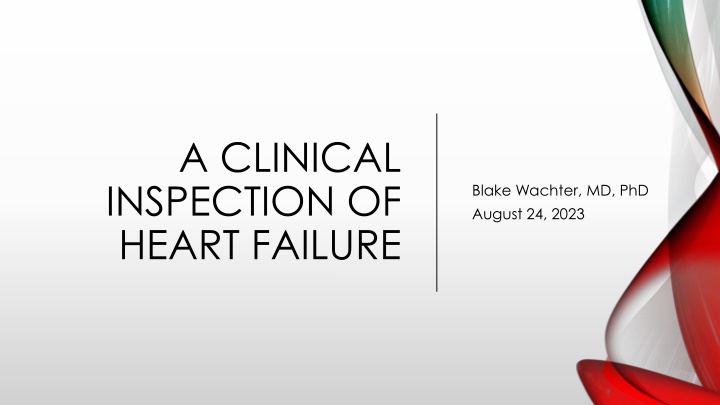
Clinical Inspection of Heart Failure: Recognizing Symptoms and Treatment
"Learn how to identify and manage heart failure through clinical inspection. Discover symptoms, treatment strategies, and important considerations for caring for patients with heart failure."
Download Presentation

Please find below an Image/Link to download the presentation.
The content on the website is provided AS IS for your information and personal use only. It may not be sold, licensed, or shared on other websites without obtaining consent from the author. If you encounter any issues during the download, it is possible that the publisher has removed the file from their server.
You are allowed to download the files provided on this website for personal or commercial use, subject to the condition that they are used lawfully. All files are the property of their respective owners.
The content on the website is provided AS IS for your information and personal use only. It may not be sold, licensed, or shared on other websites without obtaining consent from the author.
E N D
Presentation Transcript
A CLINICAL INSPECTION OF HEART FAILURE Blake Wachter, MD, PhD August 24, 2023
RECOGNIZING THE SICK HF PATIENT Shortness of breath, worse with laying down Edema (but not always in legs may be in the belly firm) Grey color / ashen Lethargic or confused somewhat Cool to touch extremities (not hands and feet) Decreased cap refill, cyanosis, mottling Abdominal pain, decreased appetite Labs: renal failure, severely elevated LFTs, elevated Tbili Low blood pressure, high heart rate
FIRST THING, DEPUFF Diurese! Aggressively, at least 2 2.5 x the home amount in IV form. No real difference in outcomes if pushes vs gtt (some respond better to one or the other) Kidney function and LFTs should improve with good UOP (negative 1 to 10 liters off depending on patient) Blood pressure should improve HR should come down Patient should dramatically feel better WATCH POTASSIUM (keep around 4.0) WATCH MAGNESIUM (keep above 2.0)
SECOND, DONT PANIC Sometimes we need inotropic agents Need PICC Line or central line Ideally calculate a cardiac index by FICK (see Med Calculator) Consider using inotropic agents if CI is < 2.0 Inotropic agents Dobutamine 5mcg/kg/min usual dose, do not titrate, fast on, fast off Milrinone 0.375 mcg/kg/min usual dose, 4-6 hours to see effect, slow off, can cause drop in BP so be ready for levophed or vasopressin in some cases Long term (months) inotropic agents are not safe (i.e. patient don t go home on these) Both can cause arrhythmias
HELP AFIB, VTACH, TACHYCARDIA ! Remember: Don t Panic Afib, Some vtach, and tachycardia is expected in sick HF patients ! DO NOT USE multiple doses of betablockers to try to control will cause to go into worse cardiogenic shock DO NOT USE diltiazem gtt ! Causes cardiogenic shock Instead put on amio gtt at 1mg/hr until further notice, no titration Consider anticoagulation if afib
I wont wean dobutamine until the patient is dry, when I am ready, I go slow decrease by 1mcg/kg/min per day Same with milrinone Keep K and Mag always in range I don t worry about the Cr initially, it should get better (if not, well then there are nephrologists that can dialyze!) Don t use betablocker with dobutamine (bc dobutamine is a beta agonist) Start valsartan if able Consider farxiga WACHTER S TRICKS
NOT EVERY ONE CAN GET ADVANCED THERAPIES Advanced therapies: LVAD , Heart Transplant Things we consider: How sick, if inotropic dependant Compliance Social support Psych Financial situation (insurance) No drugs, ETOH for at least 6 to 12 months (drug test confirmed)

